I had traveled to Oaxaca 40 years ago, during a 2-week road trip through Mexico, I had visited the archeological site of Monte Albán, capital of the Zapotec civilization from 500 BC to 750 AD. Through the years I had been reading about the flourishing of this city as an artistic and tourist destination, and I was longing to go back to witness the changes. So this October I decided to attend the Oaxaca Film Festival, as a representative of the Hollywood Foreign Press. You may read the article I wrote for the Golden Globes website.
The festival offices were located in Casa de Barro (House of Clay), named from the black, green and red pottery typical of the region. A large mural of a colorful jaguar dominated the inner courtyard. It was painted by artist Ulises Martinez in 2018. The jaguar is a symbol of power in Mesoamerican cultures, as are the serpent and the eagle.
On our first day we were excited to catch a festival of folkloric dances in the Zócalo. I filmed a local group enthusiastically dancing “El Torito Serrano.” It reminded me of photographing a professional Guelaguetza in 1978, where the best young and energetic dancers from all over the region performed.
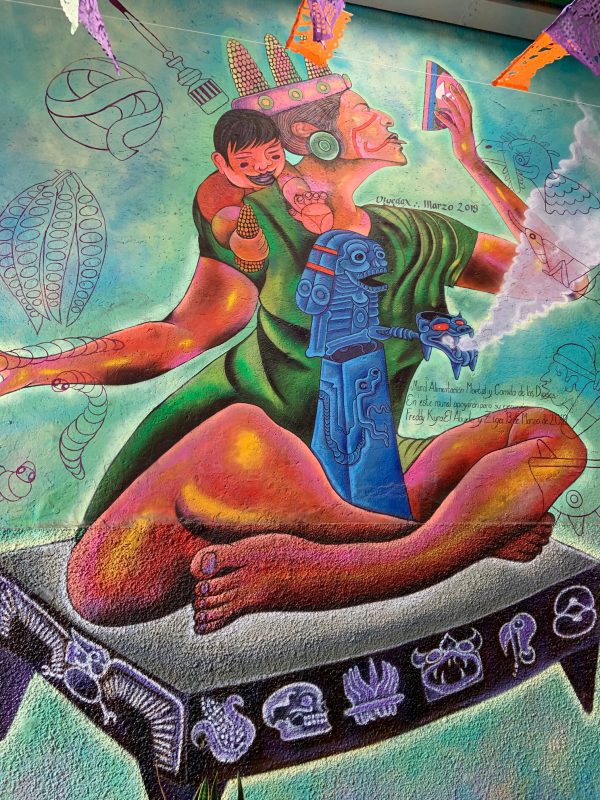
The film festival offered walking tours to explore the gastronomy, the architecture and the art of Oaxaca. Our guide Edgar lead us through the covered market 20th November to taste the mole sauces and the hot chocolate, to see the meats cooking on the grill, cecina (pork), tasajo (beef), chorizo (sausage), then to a mezcal tasting in the Txalaparta bar.
We enjoyed the cuisine of Oaxaca every morning at our hotel de la Parra, and for dinner at restaurants like Las Quince Letras and Casa Taviche.
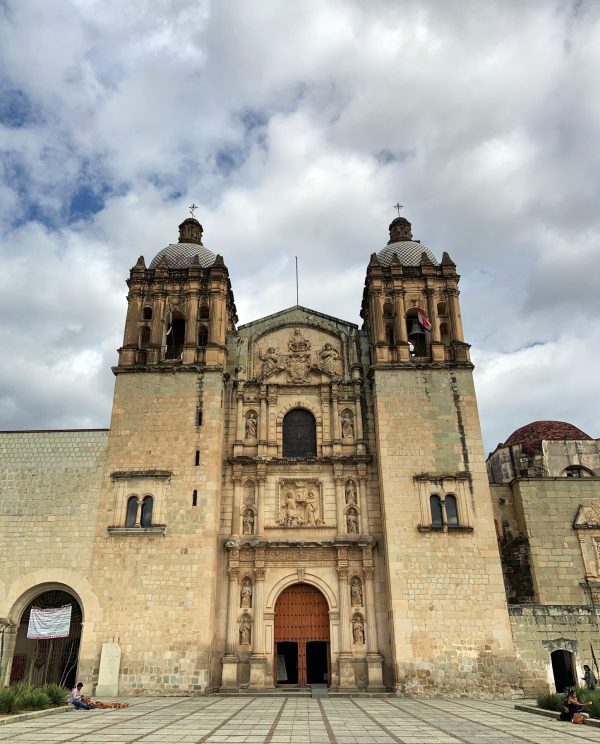
Another tour guide, Jennifer, told us the history of the church of Santo Domingo de Guzmán, built in 1575, ruined by an earthquake in 1676, repossessed by the state after the 1856 Reforma of Benito Juárez, used as military barracks, reinstated to religious use in 1938, restored in 1993.
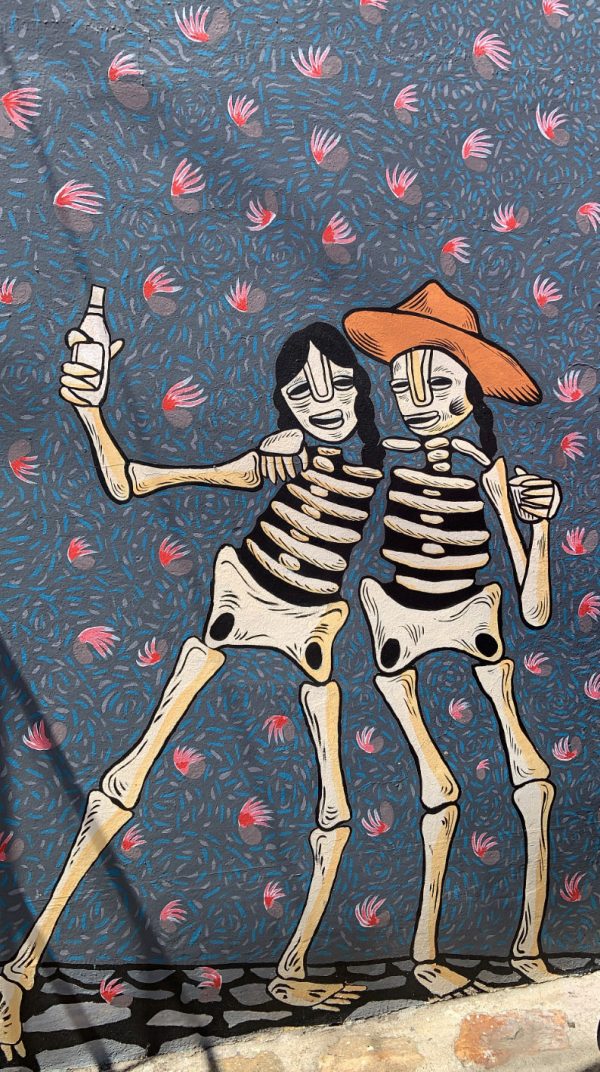
Tour guide Marie showed us murals depicting “Day of the Dead” iconography in the Jalatlaco neighborhood. Travel to the underworld during this Mexican celebration of the connection between life and death was illustrated in two animated movies, The Book of Life (2014) and Coco (2017). Local artist Alan Altamirano, nicknamed Kabrito, showed us a poster celebrating this holiday in his graphic studio La Chicharra.

I visited the Museum of Pre-Hispanic art named after painter Rufino Tamayo, who donated his collection to the city of Oaxaca. I admired the mythical pottery figures representing the deified forces of nature in various indigenous cultures, such as Zapotecs, Mixtecs, Aztecs, Toltecs, Olmecs, Mayans.
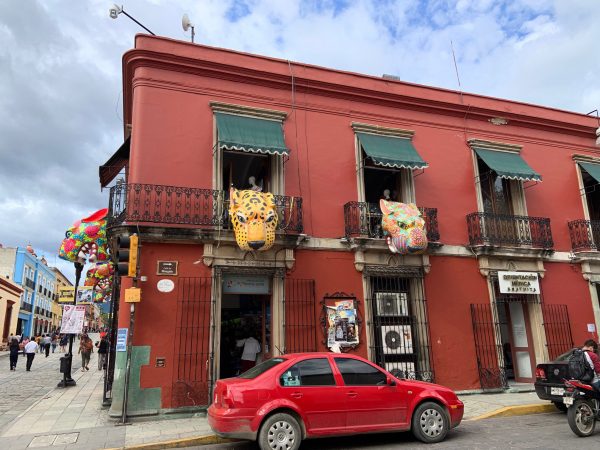
A cultured taxi driver, Leo, showed me the workshop of Jacobo Ángeles & María Mendoza, in the village of San Martin Tilcajete, where they make the fantastical animal figures called alebrijes out of the wood of the copal tree. He explained about “tonas” protectors of all living things and “naguales” shamans (curanderos) shapeshifting into animals. I did some research and found that it was Pedro Linares from Mexico City who created vividly colorful papier-mâché sculptures called alebrijes in 1936, but it was Manuel Jiménez who started carving the wooden alebrijes in his village of San Antonio Arrazola near Oaxaca, a tradition continued by his son and grandson, both named Angélico Jiménez.
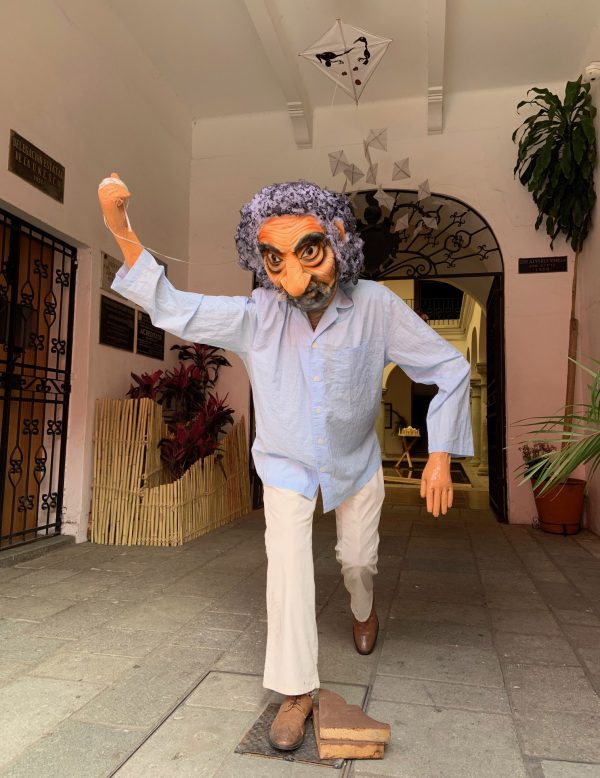
The most memorable moment of this trip was when Jennifer told us that recently deceased artist Francisco Toledo would fly kites (papalotes) depicting the faces of the 43 students who were “disappeared’ in 2014, along the pedestrian Calle Alcalá, where his home and extensive library are located. Marie commented that it will take many people to replace such a man, devoted to social justice causes until the day he died (September 5, 2019 at age 79).
(Photographs by Sammy Lyon)
